The building at 65 Worcester Street was originally the Bigelow Tavern. The tavern was built in the 1770s by Deacon Amariah Bigelow for his son Abel, who was the first innkeeper. The Tavern was part of a mini historic district, along with the little White House across the street, originally the distillery for the tavern, and the larger gold house next to it, which was a general store and once served as the hall for town meetings. In 2008, this Historic District was listed in the National Registry of Historic Places.
Later the Bigelow Tavern was owned for a time by Ezra Beaman, West Boylston's founder and landlord of the other inn in town, Beaman Tavern. At that time his grandson, Ezra Bigelow (Abel's nephew) was the proprietor. It was next run for years by the Temple family as Temple Tavern, then it became the Spofford Inn.
The Bigelows were an important family in town. The Deacon and his family had a beautiful old home on the right side of 140 coming in from Boylston, which is still standing there and still beautiful. The deacon's son owned the house on the other side of the road, just before the center of town.
This tavern was run in the early 1800s by Ezra Beaman's daughter Persis and later by Bigelow daughters.
When the center of town moved to the lower common, the tavern became a private home In the middle of the 20th century, it was Shepard's turkey farm. When the Wachusett Reservoir was constructed, the home was spared the fate of the Beaman Tavern and other structures in the town center. Later, Bigelow descendants would found the well-known Bigelow Carpet Co. in Clinton.
Scroll down to learn about the Historical Society's work restoring the Bigelow Tavern property.
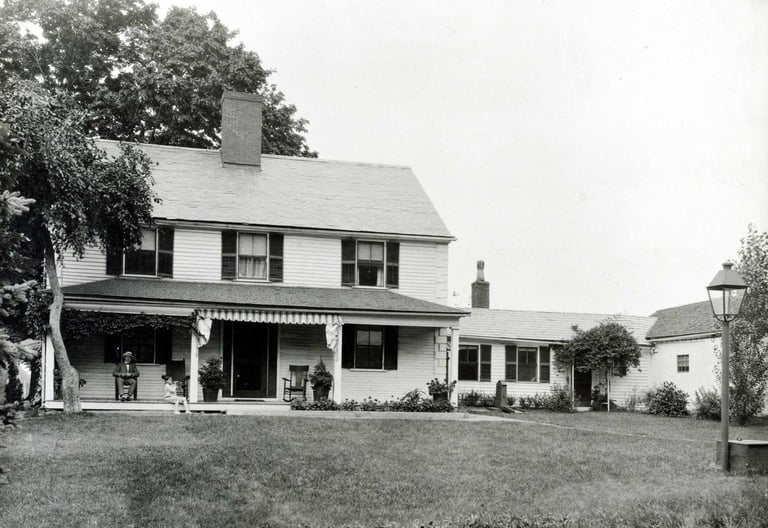



Bigelow Tavern
The Shepard House
Bigelow Tavern today
Built in the 1770s the renovated Bigelow Tavern building at 65 Worcester Street serves as the museum and research center.
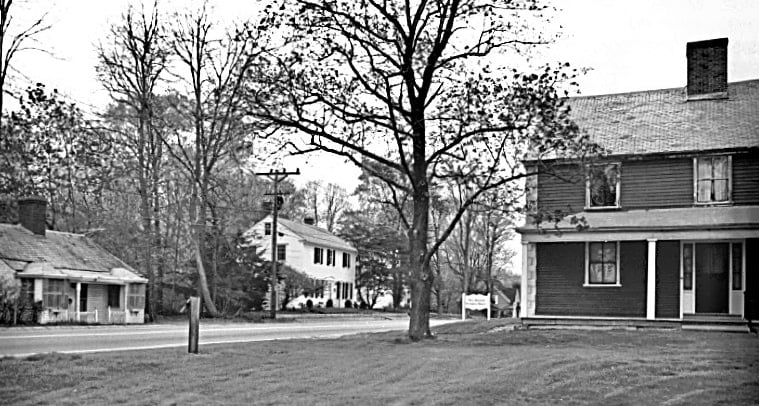

The Historic District in the 1970s
Restoration of the Bigelow Tavern Property
Restoring the Tavern
The Historical Society has been gradually restoring their headquarters, Bigelow Tavern, to an approximation of its early appearance. Two 19th century porches and a sun room have been removed. The 20th century kitchen has been largely eliminated. Paint and light fixtures in the style of the time have been added, as well as electricity and indoor plumbing.
The original fireplaces are largely intact, including the great room hearth. The windows have been restored to what is believed to be the original style.
Renovating The Ell
A successful fund drive in 2005-6 made extensive renovations possible to the ell, which is connected to the main building. That area now provides museum and research space, and a temperature and humidity-controlled fireproof vault to protect the Society's more valuable possessions. The vault is in memory of one of the Society's founders, Edgar Whitcomb
Rebuilding The Barn
The post and beam barn, circa 1745-1765, behind the tavern was originally built by the Jacob Winn family at 77 Lancaster St. In 2006, the DCR decided to raze the barn. The Historical Society, not wanting it to be destroyed asked that it be placed on the Society property. After 8 months of negotiations, in the fall of 2006, the Society received the gift of the 18th century barn from the Commonwealth, The barn was then dismantled and the pieces numbered by Historical Society volunteers, and a historic preservationist, with the help of the Community Service Section of the Worcester County jail. The barn was driven across the reservoir and reconstructed behind the tavern. Today it is used to house the Society's blacksmith, tinsmith and Cooper's tools as well as 2 historic carriages..
We invite you to visit the Bigelow Tavern on a Thursday from 9:30 am-12.
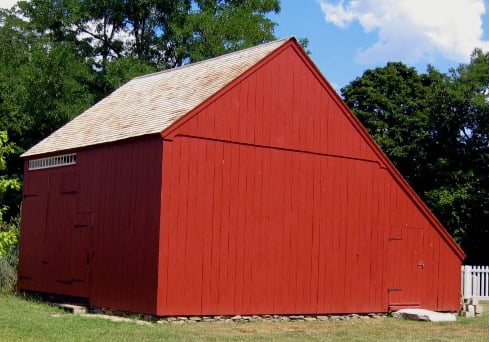

The Jacob Winn Barn
Interior Images. Click the image to enlarge.

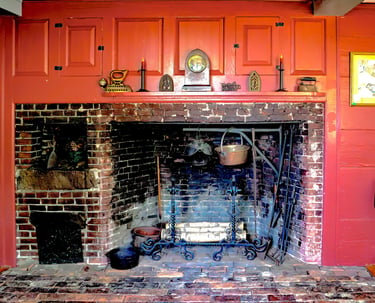
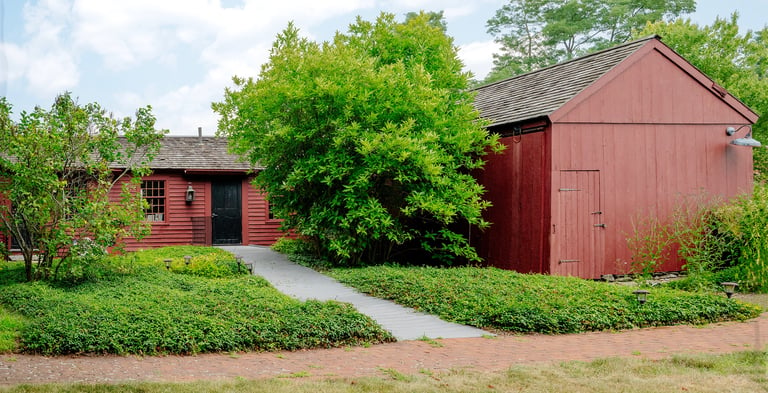

The Renovated Ell
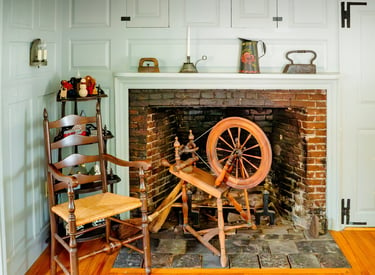

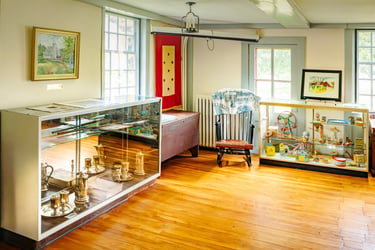


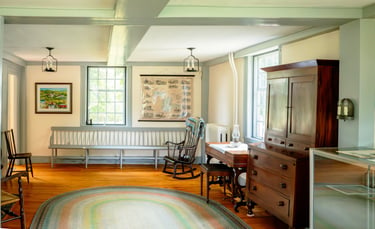
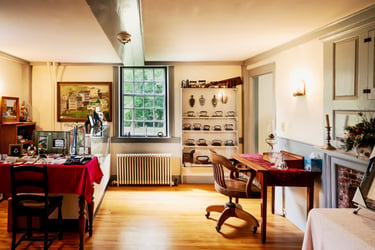

West Boylston Historical Society
PO Box 201
65 West Boylston St.
West Boylston, MA 01583
